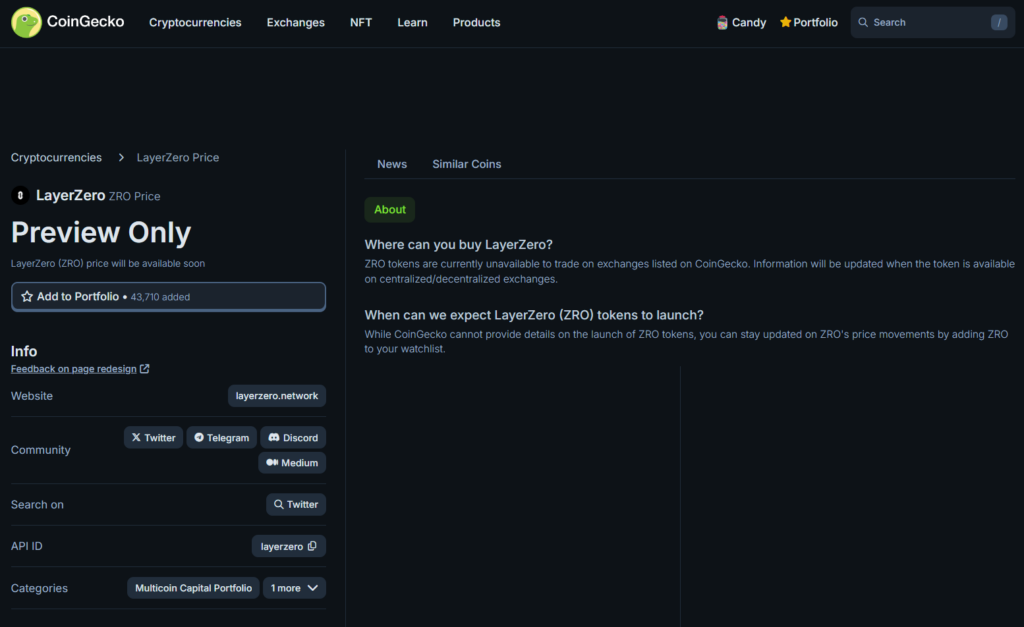LayerZero confirms snapshot for possible airdrop

Interoperability giant LayerZero announced a snapshot for an upcoming airdrop, first confirmed in December.
LayerZero is a fully connected mesh network that allows smart contracts deployed on various blockchains to interact with each other. The technology, termed cross-chain interoperability, is touted as a major solution for bridging value on standalone decentralized networks.
Several blockchains, including Aptos, Avalanche, Polygon, and Harmony, tap LayerZero’s technology to expand utility.
Following last year’s teaser, the protocol revealed its first snapshot on May 2. LayerZero’s post on X, which said more information was coming soon, suggested that the distribution plan includes multiple phases. The team previously shared plans to launch a token in the first half of this year.
Defi snapshots refer to an on-chain capture or bookmarking of wallet addresses engaging with a project’s blockchain or dApp. Snapshots assist teams in pinpointing user engagement and rewarding early participants within a given period.
Users typically gauge a project’s readiness to launch tokens when snapshots happen. Such announcements may also trigger reduced activity, as airdrop farmers could believe eligibility for free tokens has been secured and reallocate resources toward other initiatives.
The criteria for LayerZero’s airdrop are unknown since the team has not released the tokenomics. However, data providers like CoinGecko have listed a ZRO token for some time, but the token has no available details other than the ticker.

There may be speculation around the ZRO supply and how many tokens might be allocated for community distribution, team incentives, and investors. As crypto.news reported last year, the protocol was valued at $3 billion after raising $120 million in a series B funding round led by heavyweight venture firms like Andreessen Horowitz.
Funds raised are not a surefire method for determining an airdrop’s worth, but a healthy cash vault sometimes translates to a bigger allocation for users.















